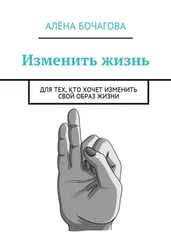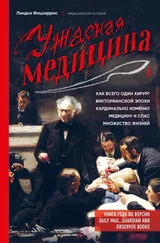MacLean CD, Susi B, Phifer N, Schultz L, Bynum D, Franco M, et al. Patient preference for physician discussion and practice of spirituality. J Gen Intern Med . 2003; 18 (1): 38–43.
Monroe MH, Bynum D, Susi B, Phifer N, Schultz L, Franco M, et al. Primary care physician preferences regarding spiritual behavior in medical practice. Arch Intern Med . 2003; 163 (22): 2751-56.
MacLean et al., Patient preference.
Ellis MR, Vinson DC, Ewigman B. Addressing spiritual concerns of patients: family physicians’ attitudes and practices. J Fam Pract . 1999; 48 (2): 105-9.
Luckhaupt SE, Yi MS, Mueller CV, Mrus JM, Peterman AH, Puchalski CM, et al. Beliefs of primary care residents regarding spirituality and religion in clinical encounters with patients: a study at a midwestern U. S. teaching institution. Acad Med . 2005; 80 (6): 560-70.
Balboni TA, Paulk ME, Balboni MJ, Phelps AC, Loggers ET, Wright AA, et al. Provision of spiritual care to patients with advanced cancer: associations with medical care and quality of life near death. J Clin Oncol . 2010; 28 (3): 445-52.
Balboni TA, Balboni M, Enzinger AC, Gallivan K, Paulk ME, Wright A, et al. Provision of spiritual support to patients with advanced cancer by religious communities and associations with medical care at the end of life. JAMA. Intern Med . 2013; 173 (12): 1109-17.
Puchalski C, Romer AL. Taking a spiritual history allows clinicians to understand patients more fully. J Palliat Med . 2000; 3 (1): 129-37.
Lo B, Kates LW, Ruston D, Arnold RM, Cohen CB, Puchalski CM, et al. Responding to requests regarding prayer and religious ceremonies by patients near the end of life and their families. J Palliat Med . 2003; 6 (3): 409-15.
Sinclair S, Pereira J, Raffin S. A thematic review of the spirituality literature within palliative care. J Palliat Med . 2006; 9 (2): 464-79.
PRRI, Pre-Election American Values Survey.
Norenzayan A, Gervais WM. The origins of religious disbelief. Trends Cogn Sci . 2013; 17 (1): 20–25. 2012.
Zuckerman P. Society without God . New York University Press; 2008.
Norenzayan A, Gervais WM, Trzesniewski KH. Mentalizing deficits constrain belief in a personal God. PLoS ONE . 2012; 7 (5): e36880.
Paul GS. Religiosity tied to socioeconomic status. Science . 2010; 327 (5966): 642.
Bulow HH, Sprung CL, Baras M, Carmel S, Svantesson M, Benbenishty J, et al. Are religion and religiosity important to end-of-life decisions and patient autonomy in the ICU? The Ethicatt study. Intensive Care Med . 2012; 38 (7): 1126-33.
Curlin et al., Religious characteristics.
Smith-Stoner M. End-of-life preferences for atheists. J Palliat Med . 2007; 10 (4): 923-28.
Dennett D. The bright stuff. New York Times . July 12, 2003.
Pew Research Center. How Americans Feel About Religious Groups. www.pewforum.org/2014/07/16/how-americans-feel-about-religious-groups/. July 16, 2014.
Jones JM. Some Americans reluctant to vote for Mormon, 72-year-old presidential candidates: Based on February 9-11, 2007, Gallup poll. Gallup News Service. www.gallup.com/poll/26611/some-americans-reluctant-vote-mormon-72yearold-presidential-candidates.aspx. 2007.
Edgell P, Gerteis J, Hartmann D. Atheists as «other»: moral boundaries and cultural membership in American society. ASR . 2006: 71 (2): 211-34.
Gervais WM, Shariff AF, Norenzayan A. Do you believe in atheists? Distrust is central to anti-atheist prejudice. J Pers Soc Psychol . 2011; 101 (6): 1189-206.
Swan LK, Heesacker M. Anti-atheist bias in the United States: testing two critical assumptions. Secularism and Nonreligion . 2012; 1: 32–42.
Gervais WM. Everything is permitted? People intuitively judge immorality as representative of atheists. PLoS ONE . 2014; 9 (4): e92302.
Charles et al., Insights from studying prejudice [see «How We Learned Not to Resuscitate», note 37].
Zuckerman et al., Atheism [see «How We Learned Not to Resuscitate», note 38].
Shahabi et al., Correlates of self-perceptions.
Roberts et al., Factors influencing views of patients.
Collin M. The search for a higher power among terminally ill people with no previous religion or belief. Int J Palliat Nurs . 2012; 18 (8): 384-89.
Smith-Stoner, End-of-life preferences.
Smith-Stoner, End-of-life preferences.
Baggini J, Pym M. End of life: the humanist view. Lancet . 2005; 366 (9492): 1235-37.
Smith-Stoner, End-of-life preferences.
Wenger and Carmel, Physicians’ religiosity; Cohen et al., Influence of physicians’ life stances; Bulow et al., Are religion and religiosity important.
Vail KE III, Arndt J, Abdollahi A. Exploring the existential function of religion and supernatural agent beliefs among Christians, Muslims, atheists, and agnostics. Pers Soc Psychol Bull . 2012; 38 (10): 1288-300.
The World Health Organization Quality of Life assessment (WHOQOL): position paper from the World Health Organization. Soc Sci Med . 1995; 41 (10): 1403-9; JCAHO. Joint Commission on Accreditation of Healthcare Organizations. CAMH Refreshed Core, January, 1998.
Labbate LA, Benedek DM. Bedside stuffed animals and borderline personality. Psychol Rep . 1996; 79 (2): 624-26.
Cervenka MC, Lesser R, Tran TT, Fortune T, Muthugovindan D, Miglioretti DL. Does the teddy bear sign predict psychogenic nonepileptic seizures? Epilepsy Behav . 2013; 28 (2): 217-20; Schmaling KB, DiClementi JD, Hammerly J. The positive teddy bear sign: transitional objects in the medical setting. J Nerv Ment Dis . 1994; 182 (12): 725.
Stern TA, Glick RL. Significance of stuffed animals at the bedside and what they can reveal about patients. Psychosomatics . 1993; 34 (6): 519-21.
Adelman RD, Tmanova LL, Delgado D, Dion S, Lachs MS. Caregiver burden: a clinical review. JAMA . 2014; 311 (10): 1052-60.
Liu Y, Kim K, Almeida DM, Zarit SH. Daily fluctuation in negative affect for family caregivers of individuals with dementia. Health Psychol . 2014.
Rabow MW, Hauser JM, Adams J. Supporting family caregivers at the end of life: «they don’t know what they don’t know.» JAMA . 2004; 291 (4): 483-91.
Читать дальше
Конец ознакомительного отрывка
Купить книгу


![Людмила Петрушевская - Спасибо! Посвящается тем, кто изменил наши жизни [сборник]](/books/28331/lyudmila-petrushevskaya-spasibo-posvyachaetsya-tem-kto-thumb.webp)









